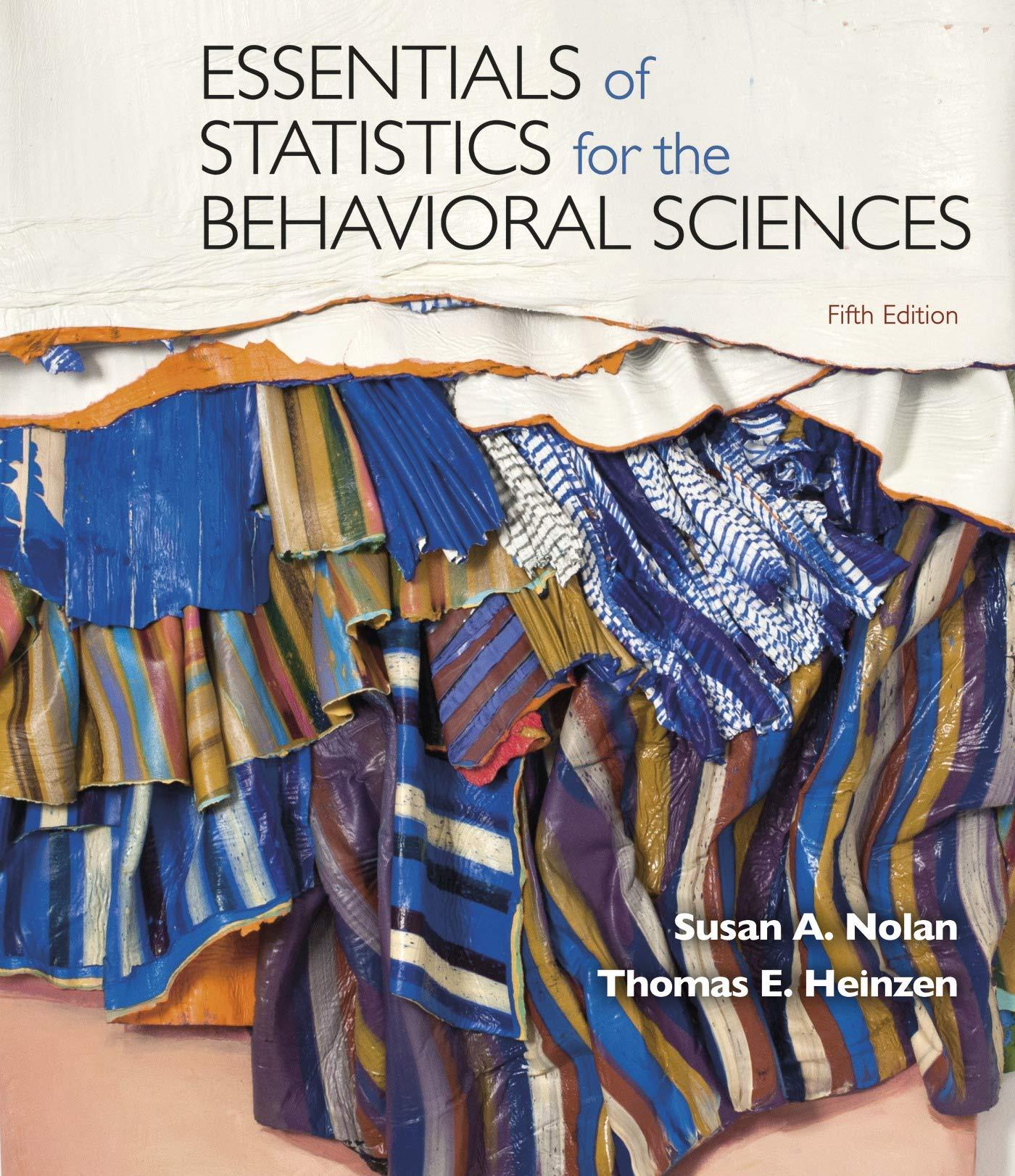3.56 Identifying variables and the best graph: For each of the following studies, list (i) the independent
Question:
3.56 Identifying variables and the best graph: For each of the following studies, list (i) the independent variable or variables and how they were operationalized, (ii) the dependent variable or variables and how they were operationalized, and (iii) the ideal type of graph that would depict these data.
a. For your favorite story, is it better to listen to the audiobook or watch it in all its cinematic glory? British researchers asked participants to either listen to an audio version or watch the TV or film version of popular stories, including The DaVinci Code, The Girl on the Train, and Game of Thrones (Richardson et al., 2018). As participants listened or watched excerpts of about one minute, the researchers measured their physiological response every few seconds, including heart rate and body temperature, which tend to increase when people are absorbed in the story. These measures were higher among those who listened than among those who watched, perhaps an indication of the importance of leaving the visuals to the imagination.
b. Lamenting the lack of sleep that plagues so many people around the globe, a reporter outlined the data on this issue (Barron, 2016). Specifically, he shared data from the National Sleep Foundation on participants’ typical hours of sleep per night from samples of people in six countries. Here are the data: Britain: 6 hours, 49 minutes Canada: 7 hours, 3 minutes Germany: 7 hours, 1 minute Japan: 6 hours, 22 minutes Mexico: 7 hours, 6 minutes United States: 6 hours, 31 minutes
c. Are money and happiness related? Researcher Jeff Desjardins (2018) explored the link between average income and happiness for countries around the world. For income, he divided World Bank data on gross domestic product (GDP) in U.S. dollars by the number of people living in that country. For happiness, he used data from the World Happiness Report, which includes the average of residents’ happiness scores. Desjardins found a relatively reliable increase in happiness as average GDP per person increased from $10,000 to $20,000 in U.S. dollars. From $30,000 to $60,000, there was an increase for some, but not all, countries. Beyond a certain point, though, more money didn’t seem to increase happiness.
d. Suppose your roommate has a new romantic partner who starts staying overnight a lot—in your opinion, far too often. At what point do you insist that the new partner contribute to the cost of your place? Jon Bittner, a Forbes reporter, tackled this question, noting that the hypothetical new girlfriend “starts hanging around nearly every night, eating on the couch, watching TV, and taking showers in the morning” (Bittner, 2011). He conducted a survey, asking participants whether the new partner should chip in, depending on how often the partner stays over, from once a month to six times a week. He created a graph that depicted these data, including percentages of
Step by Step Answer:

Essentials Of Statistics For The Behavioral Sciences
ISBN: 9781319247195
5th Edition
Authors: Susan A. Nolan, Thomas Heinzen






